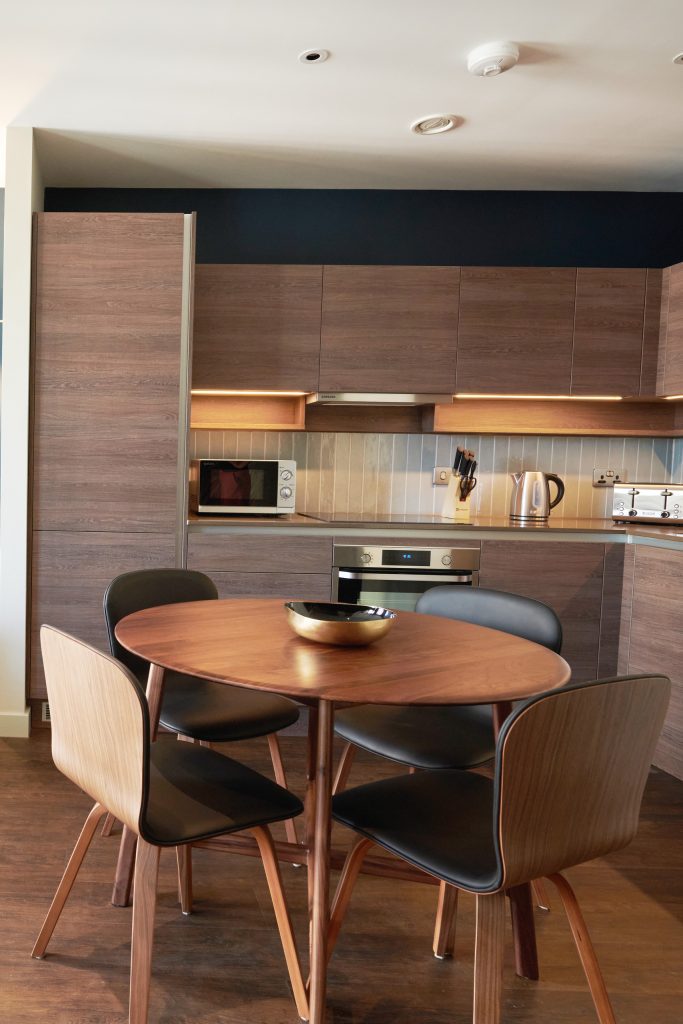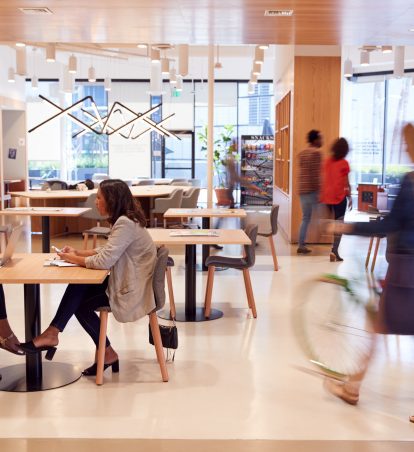Are Agents Or Operators Best For Extended Stay Housing Management?
The short answer… it depends.
The agency model, which uses a network of supply chain partners to fulfill accommodation needs, is great for infrequent travel into tight, mature markets like London, Paris, and San Francisco. While the operator model, which uses owned or master leased apartments to satisfy accommodation requests, is great for high-frequency travel or mobility programs.
Whereas an agent can theoretically find you an apartment wherever you need one, they have limited control over the end-to-end guest experience because they use partner providers to acquire the apartment inventory to house guests.
On the other hand, an operator controls the apartment inventory and guest services they offer, but if they don’t have apartments in the location where you need them, what’s the point?
So what if there was a way to get the best of the agent and the operator while limiting the downside of each?
You can! It’s often called a hybrid or multi-model approach. This serviced accommodation delivery model integrates the extensive reach and access to apartments one gets through an agent, with the control and high-touch service delivery of an operator.
With a multi-model approach, the furnished housing provider is much better positioned to adapt its service offering to the needs of your housing program.
Sounds easy enough, right?
Well, in theory, the multi-model approach to service delivery is straightforward and, dare we say, simple. Taking that theory and putting it into practice is where it gets complicated and tricky. Most extended-stay housing providers do not practice this model because it’s extremely difficult to manage as it requires two distinct skill sets and experience levels.
Curious what type of experience and expertise you should look for in your housing provider? Check out this blog.
Before we explain the required skillsets and experience levels of this type of service delivery, let’s first lay out the benefits of choosing a multi-model extended-stay housing provider.
The cornerstone of the multi-model approach is giving you, the client, control over where you place your people (this is an amazing option when you are looking to relocate employees, find intern housing or do a big group move). The multi-model philosophy is all about providing an abundance of temporary accommodation options—not just apartments. With the extended inventory offered through multi-model, you’ll have the power to choose what’s best for your program based on your global mobility needs.
With all those options also comes flexibility. The flexibility to define the accommodation style and service package that meets your program’s KPIs. In other words, if you have 10 moves a month going into the same city, why not set up branded customized apartments? With a long-term lease strategy, you can do this.
Alternatively, in areas where your moves are more intermittent (i.e., sporadic business travel or just 5-10 moves a year), long-term leases probably won’t make financial sense. That’s where you need a provider with access to a strong network of supply chain partners to fulfill your demand.
The multi-model approach is also agile. Opening a new office in Bangalore? Maybe a factory in South Korea? Due to the strong combination of long-term lease expertise and access to a supplier partner network, it is easier for a multi-model provider to establish cost-effective temporary housing solutions in new cities quickly.
So everyone touts hospitality, but can everyone deliver both guest and client hospitality? What do we mean by that?
Bridging off our last benefit, choice and flexibility, multi-model providers are best positioned to be a consultative partner to clients and buyers while also providing a hyper-local, hands-on style of guest customer care.
Instead of just delivering a path to booking an apartment, the multi-model provider aims to go that extra step by offering complete extended-stay housing program management. Meaning, they want to understand not only the full scope of your company’s housing needs but the growth trajectory of your entire organization.
Through a collaborative session, KPIs are discussed, goals are established, and the personas of your traveling staff population are clearly defined. With this knowledge and the ability to tailor your housing programs around your needs, the strengths and benefits of working with a multi-model provider come to the light.
Got a summer intern program? Need three tiers of accommodations for multiple classes of employees? Do you have special safety and security requirements every accommodation offering must meet? VIP moves… project-based assignments… large month-long training for new hires… The multi-model provider doesn’t just answer your need, they work with you to find the best solution possible.
Multi-model providers have either direct control over the front door, meaning their people provide all the guest services you’d expect from a serviced accommodation provider; or, they have strict, guest-specific, service agreements with their supplier partners to guarantee service standards.
This is to ensure your traveling population will receive the same level of service regardless of the location or the accommodation model used.
This one is a biggie… Another massive benefit of a multi-model approach is more control over day-to-day market rate fluctuations. What does this mean to you, the client? It means you save money in the long run.
Multi-model operators can typically receive better upfront pricing because they take longer leases. This also provides for better rate consistency over time. That’s not all though. Multi-model providers also manage vacancies when you don’t need the apartments. Simply put, it’s leveraging efficiencies of scale to return more value to your housing program while taking on the risk of vacancy.
Remember when we told you the multi-model approach to service delivery takes two distinct skill sets?
Here’s where the simple theory of a multi-model approach to service delivery and the actual practice diverge. Multi-model providers not only need relationships with apartment managers and property providers to get access to available apartments—but they also need the skills and know-how to manage vacancies.
Now you may be thinking, that sounds simple enough, hotels manage vacancies all the time. Yes, while that’s very true, there’s a distinct difference. That is, hotels work with shorter lengths of stay. Typically, a hotel stay is 2-4 days, whereas most extended-stay programs manage 45–60-day stays.
This difference in length of stay is where the skillset of managing vacancies comes into play.
At the end of the day, while there is a risk with each method of service delivery in the serviced accommodation industry, the multi-model provider will navigate any vacancy challenges to the benefit of its clients.
It’s probably fairly apparent at this point, that with longer-term leases in cities where you have the most demand, you’re likely to get more favorable rates. Not only that, you’ll also get quick access to affordable apartments when and where you need them most.
Furthermore, there are no surprises with the type of apartments your traveling workforce receives as they are thoroughly vetted and furnished per agreed-upon standards. So, not only do you have seamless access to apartments, but you also know they meet your safety and security standards.
You also know your traveling workforce will love their stay because the apartments were explicitly selected with your brand and housing program’s needs in mind.
Imagine if you had a block of dedicated apartments in a city with high demand like San Francisco, New York, Dublin or London? No longer are you worried about finding apartments… no longer are you worried about the quality of said apartments… and you are no longer worried about your traveling population liking the apartments. Now, you can rest easy knowing the apartment not only meets your criteria but that those very apartments will contribute to a smooth and welcoming landing for your traveler.
Imagine the value you can attribute back to your housing program if there’s a tangible correlation between the apartments you offer employees, and the satisfaction and loyalty staff members have for your company. From that standpoint, it isn’t too farfetched to consider the effect your housing program can have on employee productivity. A bit aspirational? Most certainly, but isn’t that what you want from your extended-stay housing provider?
Here’s where the distinction between selecting a provider that only fulfills housing requests versus one that seeks opportunities to elevate the comfort, security and productivity of your traveling workforce.
With one, you get a vendor—one that delivers the status quo, and your department remains a cost center. While with the multi-model provider, you get a collaborative partner, willing to invest in the accommodation necessary to bring hospitality to life. All while keeping costs low and ensuring you never have to worry about whether you have an apartment available.
The multi-model approach can adapt to your housing needs as opposed to you adapting to what the provider offers. Anything you need, wherever you need it, the multi-model provider will find it, secure it and customize it to meet your exact specifications.
No longer are you asking, can you help me? Now it’s, how can you help me?
All in all, the flexibility that comes from the multi-model provider offers the necessary leverage to turn your housing program into a value-generating department.











